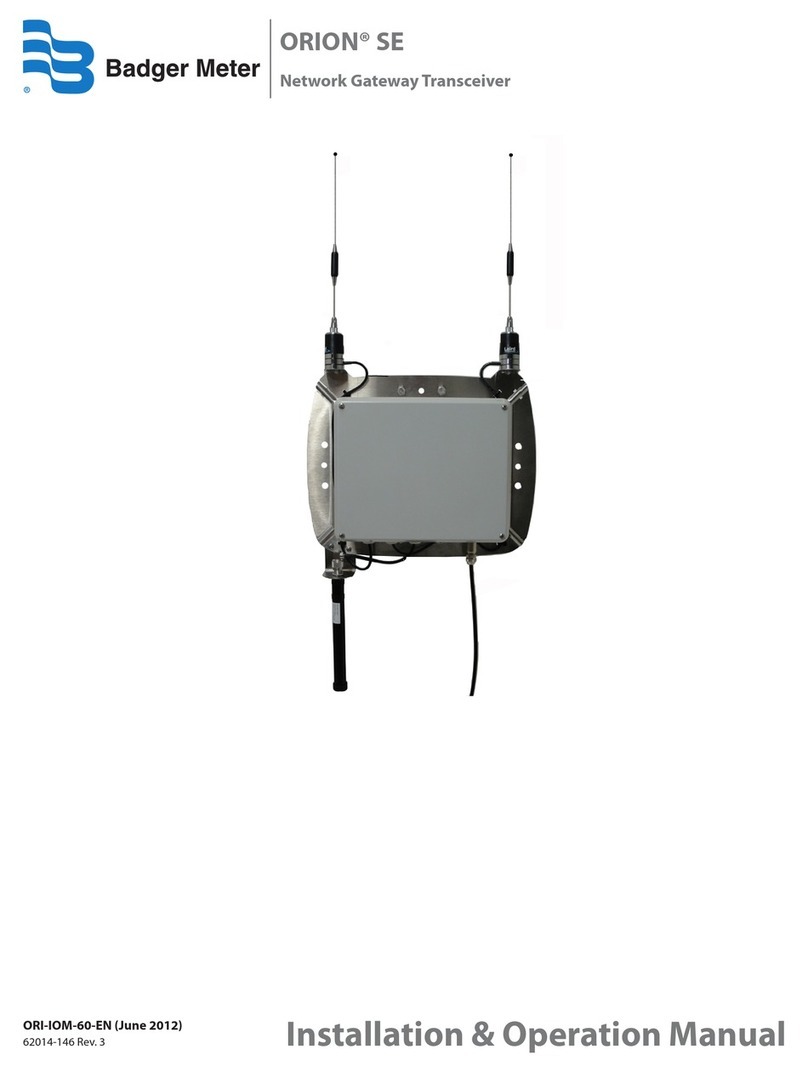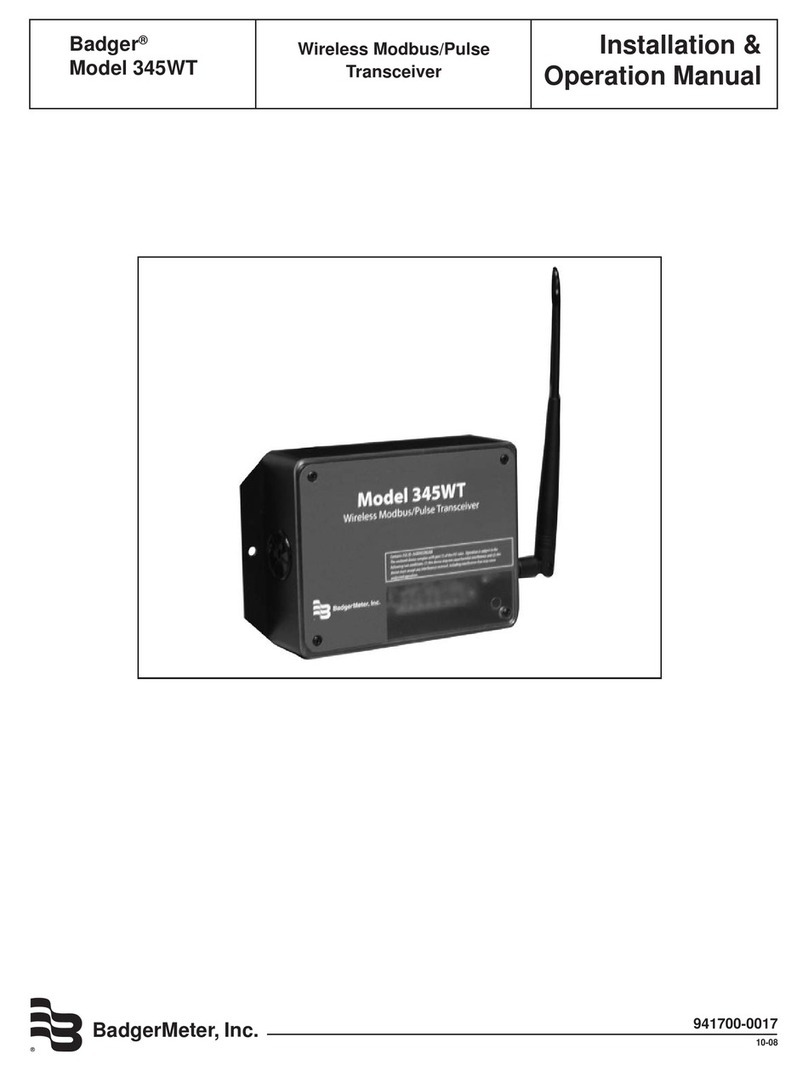
Specications
SPECIFICATIONS
Processor 60 MHz ARM7 embedded CPU
LEDs 3 × RF, 2 × RS-485, 2 × Pulse, Alive, Alarm
Power 1, 3 North America: 110…120V AC, 60 Hz, primary, 9…12V DC class 2 power supply included
CE/Europe: 100…240V AC, 50…60 Hz, primary (power supply not included)
Communication 1
Protocols Modbus RTU, 2-wire
Addressing Modbus address may be set from 1…247 via DIP switch
Baud Rate 9600/19200 baud, N, 8, 1
RF Frequency hopping, spread spectrum (FHSS), ISM band (see table)
Inputs 2
I/O 2x Pulse, dry contact, standard or KYZ, closure threshold 100 Ω…2.5 Ω user selectable
Pulse Rate User selectable to 10 Hz, 50 Hz, 100 Hz, 250 Hz
Pulse rate option 10 Hz, minimum pulse width 50 ms
Pulse rate option 50 Hz, minimum pulse width 10 ms
Pulse rate option 100 Hz, minimum pulse width 5 ms
Pulse rate option 250 Hz, minimum pulse width 2 ms
Storage Pulse counts stored in non-volatile memory
Modbus Modbus RTU, 2-wire, hard-wire connect up to 32 devices (expandable)
Range R9120-5: 900 MHz, 1 W, 3000 ft (900 m) indoor, 14 miles (22 km) line-of-sight
Weight 1.25 lb (0.67 kg)
Size 6.5 in. × 4.5 in. × 2 in. (260 mm × 64 mm × 45 mm)
Environmental 2North America: 0…50° C 3, 0…90% RH, non-condensing
CE/Europe: 5…40° C, 0…90% RH, non-condensing
Altitude 2000 m maximum
Pollution Degree 2
Codes and Standards
FCC ID FCC ID OUR-9XTEND
IC (Industry Canada) IC 4214A-9XTEND; FCC CFR 47 Part 15, Class A
Encryption 256 Bit AES
1 Intended for low voltage class 2 inputs or outputs.
2 If the product is used in a manner not specified by the manufacturer, the protection provided by the equipment may be impaired.
3 Not intended for use with rechargeable batteries.
The R9120-5 is not cross-compatible with the Badger Meter 345WT. For use with any Modbus RTU device/server.
As per SIPCO LLC, this product may be used in a system and employ or practice certain features and/or methods of one or more of the following patents:
U.S. Patent No. 7,103,511, U.S. Patent No. 6,914,893, U.S. Patent No. 6,891,838, U.S. Patent No. 5,714,931, U.S. Patent No. 6,233,327, U.S. Patent No. 7,397,907,
U.S. Patent No. 6,618,578, U.S. Patent No. 7,079,810, U.S. Patent No. 7,295,128, U.S. Patent No. 7,263,073, U.S. Patent No. 7,480,501, U.S. Patent No. 6,437,692,
U.S. Patent No. 7,468,661, U.S. Patent No. 7,053,767, U.S. Patent No. 7,650,425, U.S. Patent No. 7,739,378
Page 4 June 2016XMT-UM-02107-EN-01






























